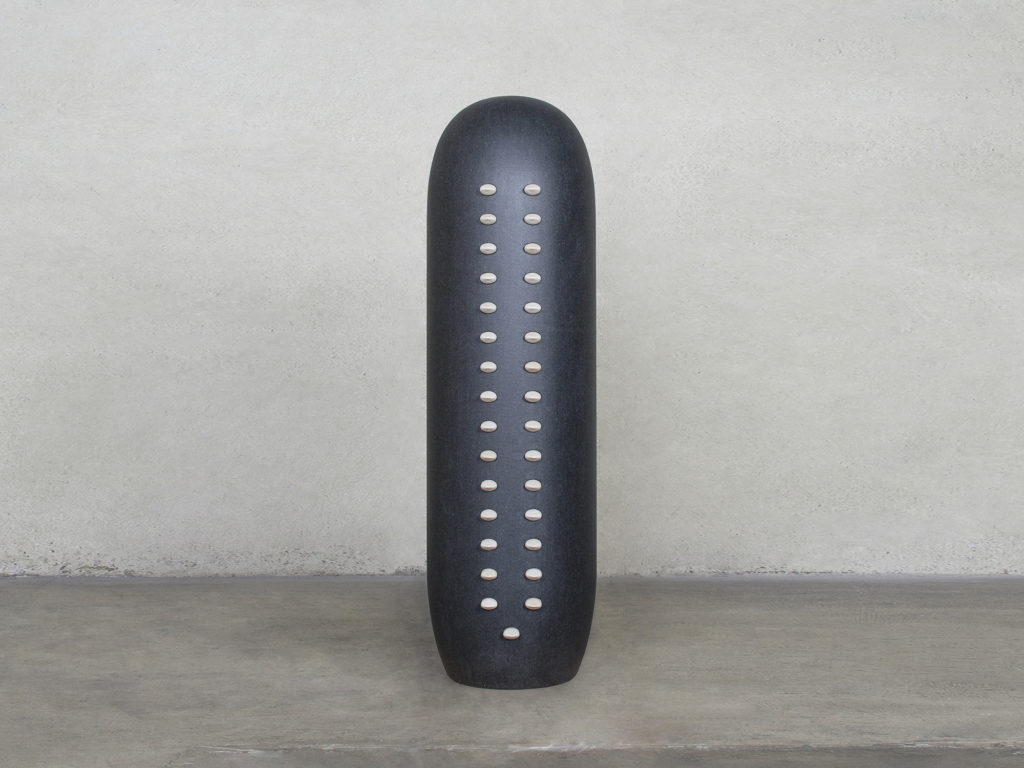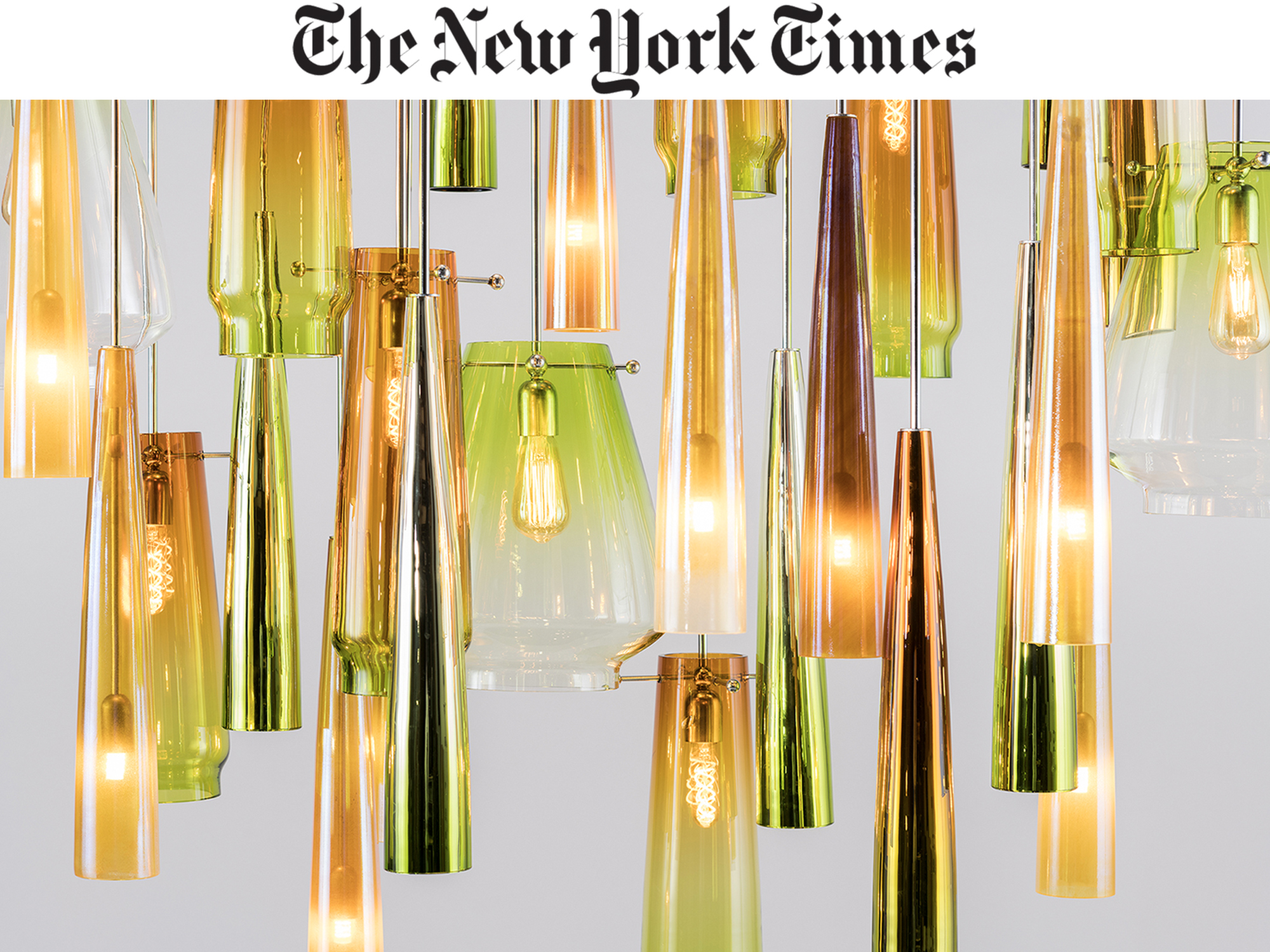By Ini Archibong
This personal reflection is part of a series called The Big Ideas, in which writers respond to a single question: What do we believe? You can read more essays by visiting The Big Ideas series page.
At some point most people want to know more about the objects I design. Whether it’s a watch, a vibrant crystal chandelier or a monolithic calendar made of black granite, it’s as though my work points to something important that I have chosen to leave unspoken, yet is fully present.
It’s true that my work is vested with very personal content; sometimes with feelings that reach to my core so deeply that I have never found a way to express them except through the things I create.
Within that core reside unchallenged fears and difficult questions that I’m still waiting for the universe to answer. And there are also beliefs, beliefs that have been growing and evolving my entire life, yet remain tethered to beliefs passed down to me by my forebears. The best way to summarize my beliefs about human existence is as follows: We are all born heroes.
But as the academic and mythologist Joseph Campbell taught us, the universe’s biggest truths and secrets are too random and nebulous to communicate and understand empirically, so mankind has applied one of its greatest gifts to the task: storytelling, often in the form of folk tales and legends.
Within the luxury goods industry, story is everything. You would be hard pressed to find a successful luxury object or brand that has no story surrounding its concept or its origins. If we’re being honest, the story is actually more important than the object’s usefulness or value, let alone the superiority of its function.
The transition from everyday object to luxury item doesn’t occur until you speak to people’s hearts and souls. Effective storytelling helps buyers identify the signifiers that convey a brand’s virtues and values, which they feel resonate with their own beliefs. And in grasping those signifiers they share in a tribal identity.
As a design student, I struggled with the need to express myself in terms of who I am, as opposed to designing for a specific audience or group of consumers. At my core is a belief in the ultimate potential of all humans to play a significant role in the sustenance of the universal system. To share a unified vision of reality, yet respect our inner, more spiritual selves and recognize that we are all infinitely powerful in our own particular way, destined for greatness.
How does one design an object that speaks to a world of diverse and divergent souls, while still maintaining the identity of both oneself and the brand one is associated with?

I don’t pretend to have the answer to that question, but I have gotten far enough to know that empathy is part of the equation. Do our stories leave us enough room for sympathy and compassion?
Consider a red rose, and all it can suggest and symbolize. Its color is a mere consequence of the wavelength of light it reflects back at us; all others in the spectrum are absorbed by the flower as it offers up its redness to the universe. What if our beliefs were to operate in a similar fashion? What if our identities became most poignant when we allowed ourselves to empathize with and internalize the stories and beliefs of others without losing sight of the vibrancy of our own?
In terms of my own narrative, I was born and raised in Pasadena, California, the son of Nigerian immigrants. By the time I was about 20 years old I had reached a breaking point. As a rambunctious, inquisitive, strong-willed, impulsive and hyperactive Black boy, I was burdened with all the requisite labels: Troublemaker. Criminal. Class clown. Underachiever. And, of course: Threat. Alongside these there was the burdensome weight of my own promise; what I knew was my enormous potential.
One day I realized that, despite my extreme efforts, there was simply no light at the end of this particular tunnel. In fact, there was no tunnel. I would never be all the things that others believed me to be.
This simple realization allowed me to accept and appreciate the things I had rejected. It allowed me to have a fuller understanding of who I was; to tell myself my own story, again and again, in whatever voice I chose. I realized that in a sense, everything that I am not makes me everything I am. From that moment on, all of my sufferings were reduced to chapters in the origin story of the hero I knew I was destined to become.
My vulnerabilities became superpowers, blessings bestowed upon me for the benefit of others. I dedicated myself to a life of service, as a hero here to serve the world in my own particular way.
Two years ago, I started to create immersive environments such as the Pavilion of the African Diaspora for the 2021 London Design Biennale at Somerset House. I saw the project, a platform for reflection on the past, present and future of the historical dispersion of Africans, as an opportunity to continue my storytelling in a potentially more powerful way: by asking questions.
What if all of us, all the children of the diaspora, remained connected today by a forgotten yet timeless mythology? Could such a story guide us on our journey to liberation and harmony?
Approaching things in this manner has a twofold effect: sparking my imagination first and foremost, but also freeing my audience from the kind of fear that could prevent them from hearing my message in the first place.
My design for the pavilion consists of a trio of twisting sculptural structures I call the Shell, the Wave Gate and the Sail. I envision the Shell reverberating with the many voices of the unified African diaspora, which will gain form in the Wave Gate and send sonic reverberations forth into the world by filling the Sail, carrying us all to a brighter future.
In a world that has been in a near constant state of social, political, racial and ideological strife, could it be possible that the majority of our problems stem from our fear of accepting the validity of differing beliefs and empathizing? Storytelling allows me to see that everything I am not is actually essential to discovering who I truly am: a single, irreplaceable piece seeking to find my place in an intricate and complex puzzle.
Ini Archibong has designed products for a range of clients, including Hermès, Knoll and Sé Collections. His work has been exhibited at numerous international museums.










